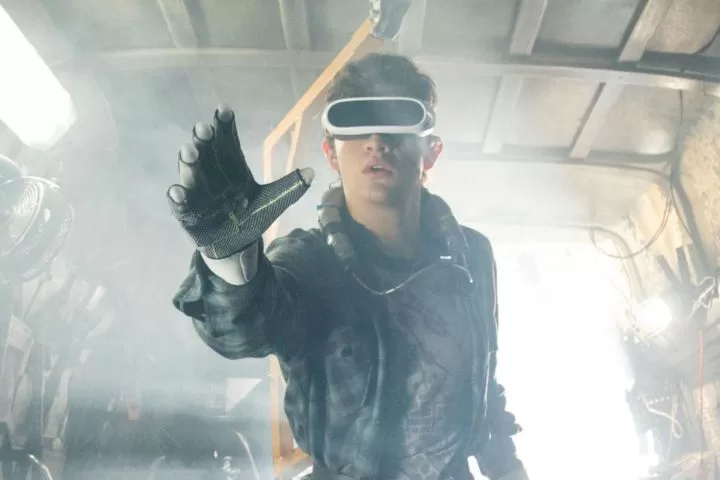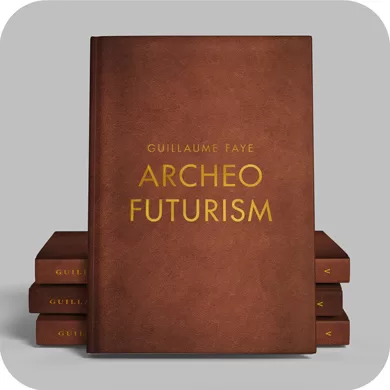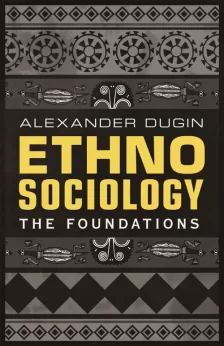Proceeding from the intellectual and philosophical landscapes of the surrounding dystopia, let us turn to the sphere of culture. Despite the transience of current cultural cases, they fulfill a number of important functions. They fix and record the current cultural moment, since even remote science fiction still operates with classical European cultural plots through the prism of a specific era of cultural creation and production. They create draft sketches of the future, combining the features of what is already technologically possible with what is still desired and fantastical, thereby shaping the attitudes and dreams of what it would be nice to invent, create, or implement. In other words, culture appears as a preliminary testing stage for innovations and modeling and conceiving future reality.
In our hermeneutical excursion, we will primarily refer to the field of cinema, which optimally combines all the varieties of the audiovisual achievements of technology and virtuality with the plots and structures of classical European culture as scenarios that are sometimes fragmented and recycled in scenes and plot lines. This, in turn, leads to a situation in which even a small sample of films is enough to catch sight of a fractal reflection of the whole nature of cinematography with its immense baggage of pictures and variations on one and the same plot.
All the variations of entertainment content for broad audiences, including movies featuring some kind of intellectual component (or pretension) as well as mere sci-fi entertainment reels, all de facto stand on the same plane. Nevertheless, as a space for illustrating the pictures of contemporary and desired reality, cinema gives us some understanding of the processes ongoing in the world of the Gestell1. Film and mass pop culture serve propaganda functions for the positive future in adventure genres, action films, and space operas. They also treat current and potential fears over the speed of technological development, the “uncanny valley,” and the security or loss of identity in such genres as comedy, horror, techno-thrillers, and utopian films and series.
Many of the Gestell’s positions are articulated and declared in the alluring images of film, and some are pronounced in implicit details, caveats, and on tertiary planes. The Enframing represents itself, its desires, and its futurological dreams. On the space of the screen, all the aspirations, projects, prognoses, metaphors, and strategies of the future are equally real and possible as long as everything expressed on screen is not synchronized with the temporal moment. Then part of the predicted and modeled will be discarded, the timing of innovations will be adjusted, while others parts will be embodied and legitimized. For example, events portrayed in 20th-century sci-fi films have not uncommonly actually taken place in the early 2000s, giving rise in this century to the practice of comparing “years in film” to sum up one or another film fantasy, i.e., what came true, what is under development, and what is still inaccessible to man and technology. Therefore, we turn to cinema not as if to something distracting us for a while and chaining us to the rectangular plane of the screen, but as a direct window onto the concrete reality of today and tomorrow. After all, the ultimate configuration of the dystopian today extended into tomorrow (“liquid postmodernity”) is a combination, a pastiche, and a superposition of fragments from numerous science-fiction images and literature.
The topic of virtual reality (VR) and “hyper” or“augmented” reality (AR) is perhaps altogether “organic” to the space of contemporary cinema. It acts as a contextual marker that not only always accompanies the plot, but unfolds on the screen and thematizes the relationship between the screen and the viewer. Watching a movie is one form of submersion into augmented reality which in artistic productions can have rather diverse variations of embodiment. In general, practically every film about the future demonstrates one or another facet of augmented reality, interactive environing, and layers of screens and virtual dimensions.
The movie Gamer presents an exquisitely detailed reality in which social stratification and the media-entertainment penetration of society are intimately intertwined. The Gamer world shows how, by way of nanotechnologies integrated into their nervous system, living people can be virtualized by a corporate monopolist of advanced games. In a huge metropolis in the near future, there are several closed locations that serve as game sites inhabited by real people who rent out their bodies (which is a form of precariat labor or slavery from the point of view of the movie’s rebel characters) to gamers, who control them as their own characters in virtual multiplayer games without ever leaving their rooms. Instead of the 3D space of classic PC games, these are real spaces, real people, real body mods, and real relationships, violence, and damage. The movie shows us two games: the shooter game Slayers, where criminals sentenced to death act as controllable characters in a real war for survival, the winner being promised a pardon, and a life and relationship simulation game called Society, where doomed people from the lower classes “work” as motley freaks and perverts. In the Gamer world, living consciousness and the presence of personality are maintained, but are removed from the volitional control of one’s body and participation in the game. A person genuinely experiences all the violence and sensations, but cannot do anything of their own accord, since the nanotech connection with the player-user harshly cuts off the intervention and will of the played-person themself. The movie also especially highlights the incredible popularity of such shows and online streams as attracting millions of viewers and bringing fame and fortune to already wealthy players from wealthy families. In fact, the Gamer world continues and brings to perfection such contemporary cultural phenomena as reality shows, social networks, and online games like Second Life and championship streams. The ingenious developer of these technologies and games, Ken Castle, formulates the question of this cinematographic world: “We live in society, we play ‘Society.’ Which one’s more real, really?”
A similar canvas is illustrated in Steven Spielberg’s Ready Player One, which depicts a future world mired in deep economic crisis. The realities of slums are contrasted to the virtual oasis of prosperity and entertainment in the OASIS online game, which offers full immersion into the richest 3D world, in which almost the entire population spends their free time. The Player One world is a pure manifestation of the exploitation of nostalgia for Western mass movie and game culture that started in the 1980s (so-called “retrowave exploitation”). It is also an all-out ode to social escapism and the ideology of interspecies, interracial, and other inter-form diversity, as the OASIS gameplay chapters are the heroes of mass pop culture. Meanwhile, the conflict between a multinational team of teenagers and a global corporation inside the game world has incredibly important effects in the real world, which consists of multi-tiered slum containers. Player One’s paradigm of values prioritizes maintaining the status quo of rules (access price) in society and the diversity of the OASIS game instead of solving the problems of economic crisis that plunged society into the need to escape from such a gray reality into a colorful pixel world in the first place. Spielberg’s movie is quite reliable on matters of VR technologies and the implementation of interactive player-character feedback, MMORPG mechanisms, as well as its portrayal of the infantilization and submersion of society’s lower classes into addiction. As in the world of Gamer and other productions, the virtual alternative is first and foremost supposed to be a refuge for the poor, the economically and socially vulnerable layers of society and peoples on the periphery of progress. The sharp corners are deliberately smoothed over, and the lack of alternative to virtuality is presented in a playful manner as entertainment in a world of imaginary freedom to be whomever one wishes.
Without a doubt, the cult film and defining expression at the turn of the last century was The Matrix, which combined many of the cultural intensions of Postmodernism in corresponding visual form. The world of The Matrix is an absolutely real cast of the world, particularly the United States, in the mid-1990s. The reality of the virtual illusion, called the “Matrix,” directly refers us to the topic of Baudrillard’s simulacra and simulations, and it is Baudrillard’s book that the protagonist, Neo, picks up in one of the opening scenes. The very word “matrix,” translated from Latin, means “root cause,” “source” (referring to the womb), and in typography and production “matrix” refers to the form from which copies are printed. In chemistry and physics, there is the method of “matrix isolation” used to separate particles from one another and their environment. All of these nuances are embodied on the movie screen. The Matrix is, as a virtual copy of the world, the “first reality” or simply “reality” for all people, who in the non-virtual, post-apocalyptic world are physically isolated in pods on endless incubator fields serviced by machines. Humans became the biological source of energy for the machines that enslave them in the future. This took place in the era of the 1990s and connected (once again the existential “Connectivity”) everyone to a single system of simulation. On the whole, the picture of The Matrix can rightfully be used as an allegory for the current state of affairs and the Gestell’s relation to the biological masses of people, whose status is that of data and actor sources for information moving across networks.
The Matrix world is the primary cultural and even ontological world in which all people live, and being torn out of the decorative simulation creates ontological and existential crisis. Genuine reality is perceived to be a destroyed copy of the “dream world,” waking up in a capsule which the machines register as an error and therefore dump such people into the sewer, and is likened to a “system failure.” There are awakened people who want to return to the simulacrum, to “reconnect.” The whole nerve of this situation — and this is, without a doubt, a knot of all the problems of human being vis-à-vis reality, the cosmos, the world of technology, and authenticity — is contained in the scene of the conversation between the traitor Cypher and Agent Smith, an artificial intelligence that protects the system from human actions. During the conversation in a restaurant inside the Matrix, Cypher expresses his desire to return to the simulation, and in order to do so he is willing to betray people in the outside world. Between the two “realities,” Cypher chooses pleasure and being inside the illusion. The key line is uttered over a piece of meat: “You know, I know this steak doesn’t exist. I know that when I put it in my mouth, the Matrix is telling my brain that it is juicy and delicious. After nine years, you know what I realize? Ignorance is bliss.” Bioethical abolitionism and hedonism are this character’s credo.
The plot of The Matrix extends into three installments, each successive film of which increasingly deviates from the Postmodern intellectual message of the first part, instead shifting to entertainment, special effects, and fight scenes. In the end, having completed his prophesied mission, Neo negotiates with the machines and sacrifices himself to save the last human city — that is, a city whose people are still dependent upon technologies, but within a different hierarchy of connectivity and isolation from the machine networks. If we broaden the context and refer to the internet apocrypha of versions of the Matrix trilogy’s scripts, then we learn that Neo and the rebels’ whole struggle on behalf of all people against the machines, the whole content of the trilogy, is but one, even deeper level of the Matrix. Insofar as a certain percentage of people somehow come to reject the simulation from the inside and awaken in the real world, the machine algorithms have stopped even the potential for rebellion by simulating awakening, simulating a real external world and struggle, thereby hushing the existential impulse of the least content organisms inside their system. According to script apocrypha, such an explanation of the impossibility of awakening and the second level of illusion within the illusion was supposed to have been revealed to the key protagonists at the very end of the trilogy. But this worthy idea was not realized “at the insistence of the producers,” for the absence of a happy ending would have made itself felt negatively at the box offices, depressing viewers and implicitly pushing them to question the possibility of the real. Avoiding this and making a profit — such is very much in line with the logic of the Matrix.
A very realistic version of AR with respect to the current technological level is presented in the movie Anon. The word “augmented” in “AR” refers to the word Augen, meaning “eyes.” Augmented reality is the overlay of interactive layers on human vision, such as through AR applications, glasses, contact lenses, or implants and prosthetic eyes. In the world of Anon, implants connected to a single network allow any person to record and edit everything they see with their own eyes, as well as add advertising and minimalistic interactive data questionnaires about passers-by and interlocutors in real time. Human memory is replaced by an archive of the highest quality video feed, and if desired, one can delete unpleasant moments, whereby a person literally forgets them. This is actively used by intelligence and security services to investigate murders, such as by viewing the last minutes of a victim’s life and scanning people on the street. This cinematic world is dominated by total transparency, the condensed identification of all people, and solid recordings of everything they see with their high-tech vision. One special luxury, as well as a violation of the law, is anonymity technology entailing the ability to delete one’s data from the database so as to render identification impossible. This is what the main character, a detective, faces when he cannot identify a girl who passes by him. The system informs him of a failure in identifying the passer-by, and at first he cannot believe that such a thing is even possible. The movie’s plot unfolds around the restoration of law and order, the discovery and destruction of a hacker group that had been allowing people to illegally correct their memories by way of perfect editing and buying absolute anonymity. Of interest to us are the details that accentuate some of the dimensions of AR. For example, one of the signs of a character’s death is the fading and code folding of their 3D advertising and their appearance in the vision of the real world, unmarked by additional recording layers of their last minutes of life. Another example shows how much a person is hostage to technology integrated into their very corporeality and consciousness: augmented reality allows not only for recording, editing, and storing the video stream of someone’s life, but also making it viewable from within someone else’s vision. This is used by ill-wishers to forcibly reproduce false pictures, to replay a person’s tragic and painful fragments of memory on loop, or to completely erase their memories by deleting their archive.
At the present stage in the development of AR technologies, the main “window” to the world are augmented reality glasses and camera-to-screen connection on smartphones and tablets. The latter is the most widely accessible, hence mobile phones have already taken on extreme dimensions in cinema. For instance, in the comedy iBoy, whose name is a play on Apple’s iPhone smartphones, an accidental witness, the teenager Tom, becomes a victim of criminals in the act. He is shot in the head the moment he tries to call the police, and fragments of his smartphone get stuck in his brain tissue. Waking up from a coma, he realizes that he now has the consciousness of a hybrid smartphone-person: he can receive 3G signals from cellular networks, go online, type SMS with the power of thought, and visualize data in his field of vision. With these new powers and smartphone services, the protagonist administers justice. As opposed to being “supernatural,” Tom’s abilities are described as “cybernatural.”
An alternative scenario is unfolded in the horror film i-Lived. The main protagonist is an unfortunate browser of mobile applications. His life changes when he starts testing a new program that rewards him with points for various tasks completed in real life. Successfully completing simple tasks for the application leads to real improvement in the protagonist’s life. But gradually the tasks become more and more strange and cross the border of legality, such as stealing, kidnapping, hitting a stranger, inflicting pain, etc. He decides to cancel the signed license agreement and application membership, after which altogether mystical forces begin interfering in his life. His Apple smartphone and the i-Lived application installed on it, which read backwards is “Devil-I,” one-up the old plot of making a deal with the devil in the form of accepting a user license agreement (EULA), i.e., those ubiquitous disclaimers which few people ever actually read before accepting.
Very telling are those cinematic examples in which the Gestell blurts out its own problems with the installation of augmented reality. In many films where the characters travel in deep space or live in a traumatic future world, one finds the decorative element of cabins and rooms’ walls being covered in screens. In such rooms where the characters live or undergo therapy, the screens broadcast landscapes from planet Earth: mountains, fields, oceans, flocks of birds, and herds of animals. This unconsciously emphasizes the human being’s deep alienation from the surrounding futurological reality or the emptiness of the abysses of lifeless space. A person needs therapy to remove their anxiety, with which the room’s screens help by affording views of real or simulated nature that appeal to his deep archetypes and are designed to calm him down. This designates a paradox: man consciously destroys surrounding nature and ecosystems in order to achieve a high level of technological development that then allows him to simulate the very same nature and biological diversity for his own psychological comfort.
Footnotes
1Editor’s note: Martin Heidegger’s notion of Gestell, or “enframing,” refers to the way modern technology organizes and transforms the world, reducing everything to resources for management and optimization. Heidegger was concerned that this mindset leads to a loss of inherent value and meaning in things, distancing us from a more authentic engagement with the world and restricting our understanding of reality. In essence, Gestell highlights the potentially limiting effects of modern technology on our perception and experience of the world.










The button promoting me to share my thoughts before I have finished the article is a wonderful display of dystopian truth. I will definitely be buying a copy of your book (and burning it.)
I would recommend reading William Gibson’s Peripheral or watching the series for more in this vein. Excellent article. Let’s see more from Ask Svarte here on Arktos!